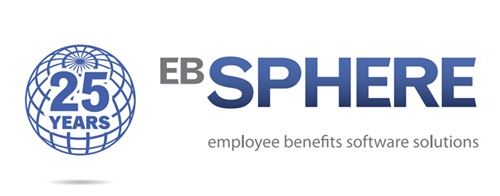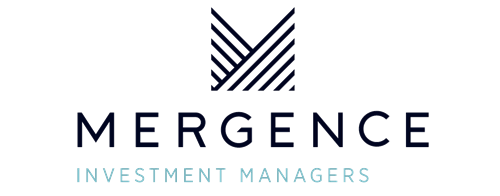Sean Ashton, Head of Investments at Private Clients by Old Mutual Wealth
Local investors will have to look offshore to generate returns from the new artificial intelligence (AI) led revolution, or risk missing out. “We are at a very unique moment in time where significant investment has gone into the groundwork for a productivity explosion the likes of which we have never seen,” says Sean Ashton, Head of Investments at Private Clients by Old Mutual Wealth.
The revolution is coming on the back of unprecedented capital expenditure, with cumulative capex by the major ‘hyperscale’ firms in the United States (US) forecast to exceed USD360 billion this year, compared with just USD133 billion in 2021. Companies such as Amazon, Google, Meta, Microsoft, and, increasingly, Oracle are investing billions in data-centre infrastructure and securing chip supply to fuel their AI activities. Meta alone spent USD37 billion in 2024, rising to USD71 billion in 2025, and is forecast to top USD120 billion in the following year.
The big change in the mega-cap technology space is that exceptional businesses finally have a productive outlet for their free cash. “Thanks to AI, these mega cap firms have the ability to invest in technology that is both a business top-line accelerant and an efficiency driver,” Ashton explains. Firms that can make capital investments that sustain returns above their cost of capital are a better long-term bet for investors than those simply piling up cash on the balance sheet or buying back their shares at a 20 PE valuation or worse.
Is AI having a real business impact?
The business benefits of AI are already in plain view. “Revenue per head is going up dramatically at the likes of Meta and Microsoft,” Ashton says. In FY2023, Meta employed 67 000 people for a revenue of USD135 billion; for FY2025, the forecast is USD200 billion with 76 000 employees. Over the same period, Microsoft has increased its revenue by approximately USD70 billion, adding just 7 000 employees.
OpenAI, which owns and operates ChatGPT, is poised to become one of the most important companies in the technology world. The business already boasts 800 million users, a USD500 billion private market valuation, and USD13 billion in annual revenue despite monetising only a tiny percentage of its user base. And its revenue growth path leaves both Google and Meta in the shade.
The real story behind the AI trend is the “increasingly interwoven web of transactions” between the main players in this space. Nvidia has committed USD100 billion to OpenAI in exchange for chip purchases. For its part, OpenAI has also committed to supporting AMD, Oracle and others over the medium term. “Nvidia was the first transaction, but now other companies are getting involved,” Ashton says.
There are three clear messages emerging from the current AI and technology theme. First, OpenAI will quite likely become a multi-trillion-dollar company in the next five years. Second, the large technology firms have cottoned on to a ‘build it and they will come’ philosophy: the more they spend, the more turnover they generate. And third, the major tech firms believe it is in their collective interests to backstop OpenAI’s development until the latter is self-sustaining.
These messages underpin Private Clients’ exposure to a number of US tech counters. “The returns to scale in the world that we are heading into appear to be growing,” Ashton says. He predicts a massive transfer of wealth from the ‘bargaining power of labour’ to capital, as firms opt for depreciation charges on tech investments such as GPU chips over higher wage bills.
Countering the bubble-territory concern
A growing cohort of market commentators believe the S&P 500, and particularly companies exposed to AI, is deep in bubble territory. Ashton dismisses these concerns, noting that the price-earnings (PE) ratio of the Nasdaq 100 is about half today’s level compared with its peak before the 2001 dotcom bust.
“The price action that we have seen thus far does not confirm that we are in bubble territory yet,” he says, adding that while US equities are expensive, things will have to get “a lot crazier” before we see the blow-off-top activity typically associated with a bubble. The concept was unpacked further in light of current valuations: yes, US equities are expensive relative to the past decade, but the index construct has changed too.
It is also possible to draw correlations between 1997, four years prior to the dot-com collapse, and today. Back then, US CPI stood at 3% and the Fed funds rate at 5.25%. “The macro environment offers a tailwind today as opposed to the headwinds we had in 2021 given an easing interest rate environment today compared to the sharpest hiking cycle in recent memory from early 2022 from record low interest rates,” Ashton says. More importantly, the internet and its commercial use were about two and a half years old back in the mid to late 1990s, compared with the two- to three-year-long acceleration of AI into the mainstream today. To conclude the bubble-or-not conversation: “Bull markets very seldom die on scepticism; they tend to die on euphoria.”
Private Clients is applying its investment methodology to navigate the AI wave. The key is to weigh quality, valuation, diversification, and time on each buy and sell decision. “Everyone wants to own a quality company at a good price, but you also need to consider the second derivative, being threat of change in key metrics, such a revenue growth, margins and returns on capital.” If a firm’s return on capital is degrading – even from a high level, whether due to economic, company-specific, or sector-specific concerns, its place in the portfolio should be interrogated.
“We will not know what the ultimate return on the tech sector’s current investment is going to look like for a couple of years, but massive productivity gains are likely,” Ashton concludes. “As for the return equation, we default to optimism rather than pessimism because the early signs are encouraging.” Even so, Private Clients remains sensibly diversified, avoiding an ‘all-in’ stance on the AI and technology trend, and maintaining exposure to strong cross-sector companies.
ENDS

























































































